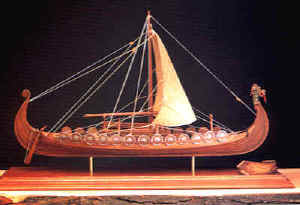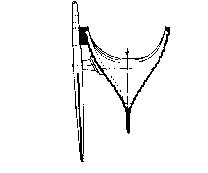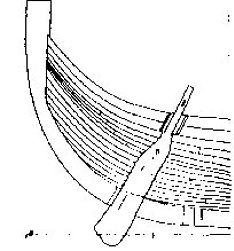|
The above drawings were scanned off
the plans of the Gokstad Viking ship. Although a bit rugged for the wear
and tear of file compression, this gives the viewer an idea of the
unique solution these people had for a rudder. For detailed Viking
shipbuilding methods refer to the link 'Viking Ship Construction' on the
contents bar.
Following is an excerpt of this
outstanding, but unfortunately out-of-print book.
'Finally we come to the
rudder, one of the most important parts of the ship, and one which well
deserves closer examination. To the modern eye the Gokstad ship is
furnished with a very curious arrangement for steering. The rudder
itself is shaped like an oversized oar-blade, hanging outside to
starboard, aft. It is cut front one piece of oak, 10' 8 3/4" (3.30
m.) high and 16 1/2" (42 cm.) wide, with a slightly out-curving
heel at the lower cud. Fundamentally it is thus a very large
steering-oar. Originally, the rudder must have been just an oar, held
against the side of the ship, as is done in small boats today, but with
larger vessels such a rudder gets too heavy for one man to handle and
keep in the correct position when the ship is under way. It must have
been a very complicated problem to fasten the rudder so that it would
cleave the water at a suitable depth, turn on its own axis and resist
the pressure of heavy seas. We have seen how imperfectly this was
arranged even at the time of the Nydam ship. In the Viking ships a
satisfactory solution bas finally been found, the rudder being attached
to the last rib aft, which is especially shaped for this purpose.'
You will find
additional pages on this site containing useful information on the 76'
6" Viking Ship Gokstad through the Contents bar. If you are
interested in purchasing a complete set of building plans for the 9th
century Viking ship visit our HOME page
for details.
If you have an
interest in service and the philosophy of nonprofits towards helping
others visit our central Web site for information on MeriSol
Services, Inc.
| 





